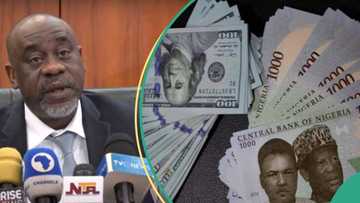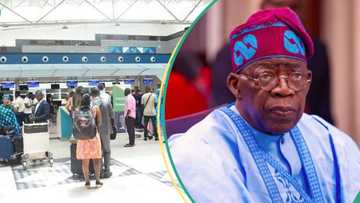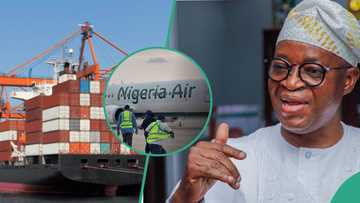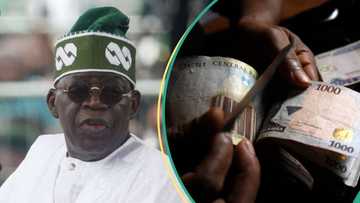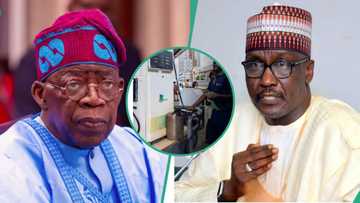Nigerian currency notes and coins: historical and visual features of the Naira
The Nigerian Naira has had different visual features over the years. Each time the government introduces new Nigerian currency notes and coins into circulation, it redesigns the new currency's visual elements to make it stand out from the previous issue. This makes it simpler for the public to distinguish between old and new cash. This article shares pictures of Nigerian Naira notes and coins to help people using the Naira for the first time distinguish new banknotes from old ones.
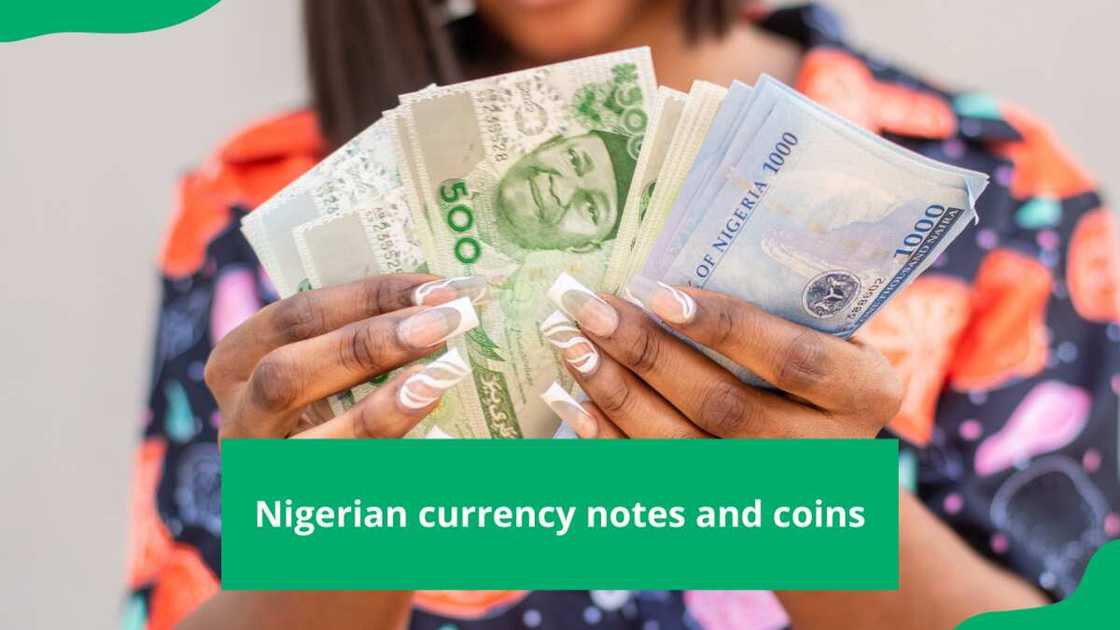
Source: Getty Images
The government uses three processes — retirement, natural wear and tear, and demonetization — to add new notes and coins into circulation and remove old ones from the economy. Unlike normal wear and tear, retirement and demonetization alter the appearance of the currency.
New Nigerian currency notes and their names
In natural wear and tear, the government issues new coins and notes that are visually identical to the old ones to replace torn and worn-out currency. Retirement eradicates old banknotes and coins out of circulation and replaces them with new designs. Meanwhile, demonetization means stripping a currency unit of its status as legal tender and introducing new versions into circulation. Below are the new Nigerian Naira currency notes and their names :
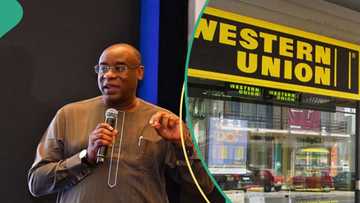
Read also
CBN sends message to Western Union, other IMTOs as naira’s crashes at official, Black FX markets
The ₦200 Nigerian currency note
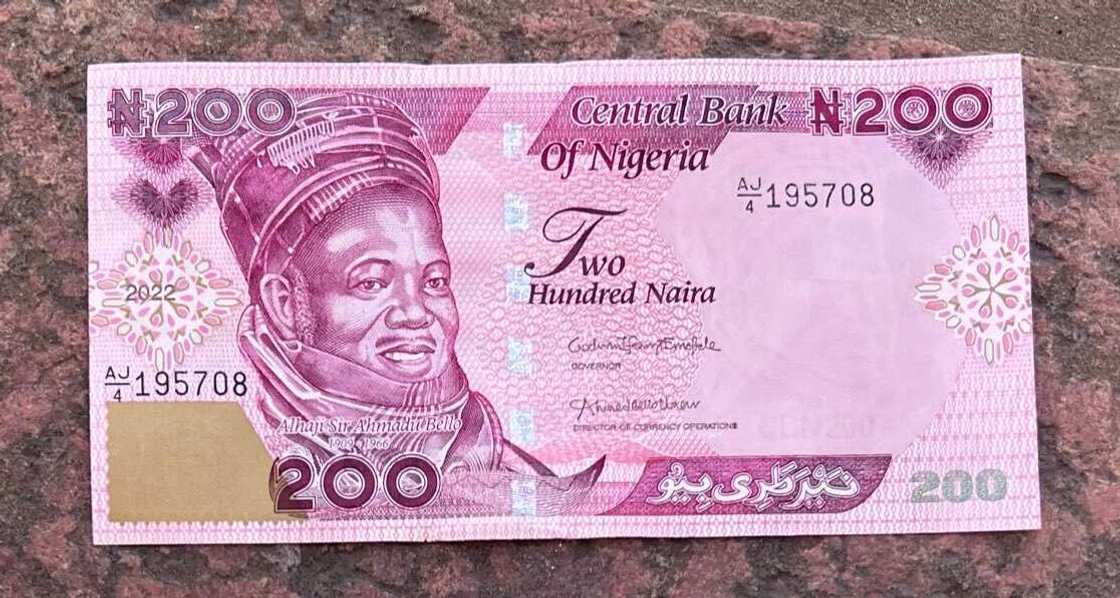
Source: Twitter
The new ₦200 banknote features Sir Ahmadu Ibrahim Bello — the Sardauna of Sokoto and Northern Nigeria's Premier. The Nigerian political leader served as the spokesman for Northern Nigeria during the country's struggle to gain independence.
The ₦500 Nigerian currency note
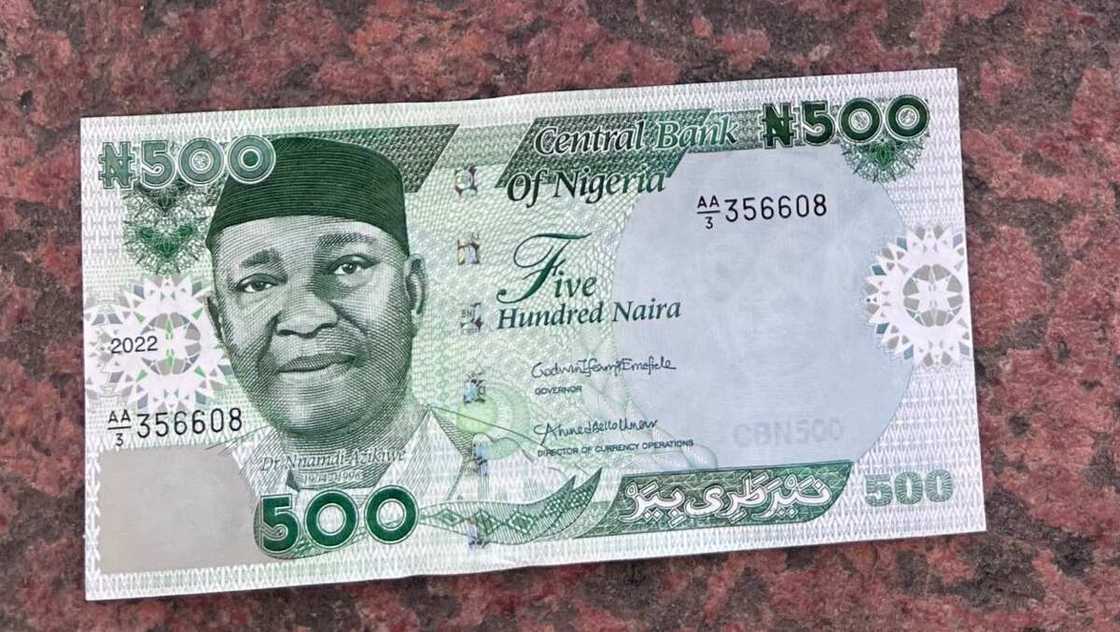
Source: Twitter
The new ₦500 banknote features Nnamdi Benjamin Azikiwe — Nigeria's first president after independence. The image symbolizes his leadership during Nigeria's early post-colonial era. He was in office from 1963 to 1966.
The ₦1,000 Nigerian currency note
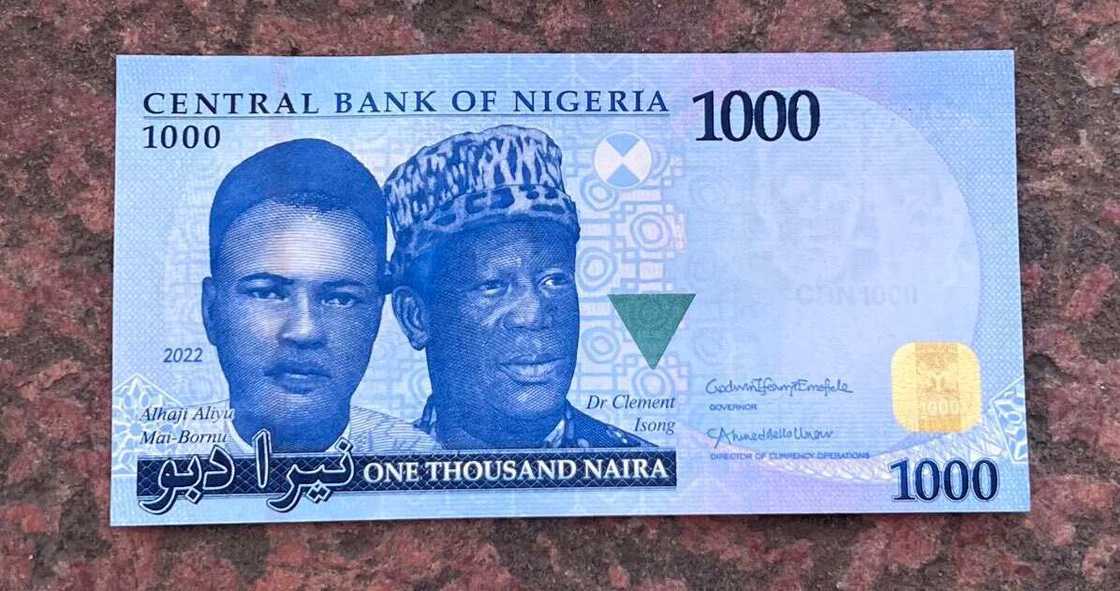
Source: Twitter
The new ₦1,000 banknote features Mallam Aliyu Mai-Bornu – a Nigerian economist and the first Governor of the Central Bank of Nigeria, and Clement Nyong Isong – a Nigerian banker/politician and second governor of the Central Bank of Nigeria.
The history of the Nigerian currency notes
The federal government of Nigeria has changed the currency severally to control the quantity of money in circulation and, to some extent, to achieve some of its economic objectives. Below is a short history of the Nigeran currency:
When was the Nigerian Naira introduced?
Twelve years after the country attained independence on October 1, 1960, the government replaced the Nigerian pound with the Naira (₦) on January 1, 1973, at a rate of £1 = ₦2.
The West African Currency Board (WACB) issued Nigerian pound banknotes in Nigeria from 1912 to 1959. Before this, Nigeria used cowries, manilas, and other forms of money. The pound was subdivided into 20 shillings, each of 12 pence. On July 1, 1959, the Central Bank of Nigeria (CBN) replaced the pound with Nigerian currency notes and coins.
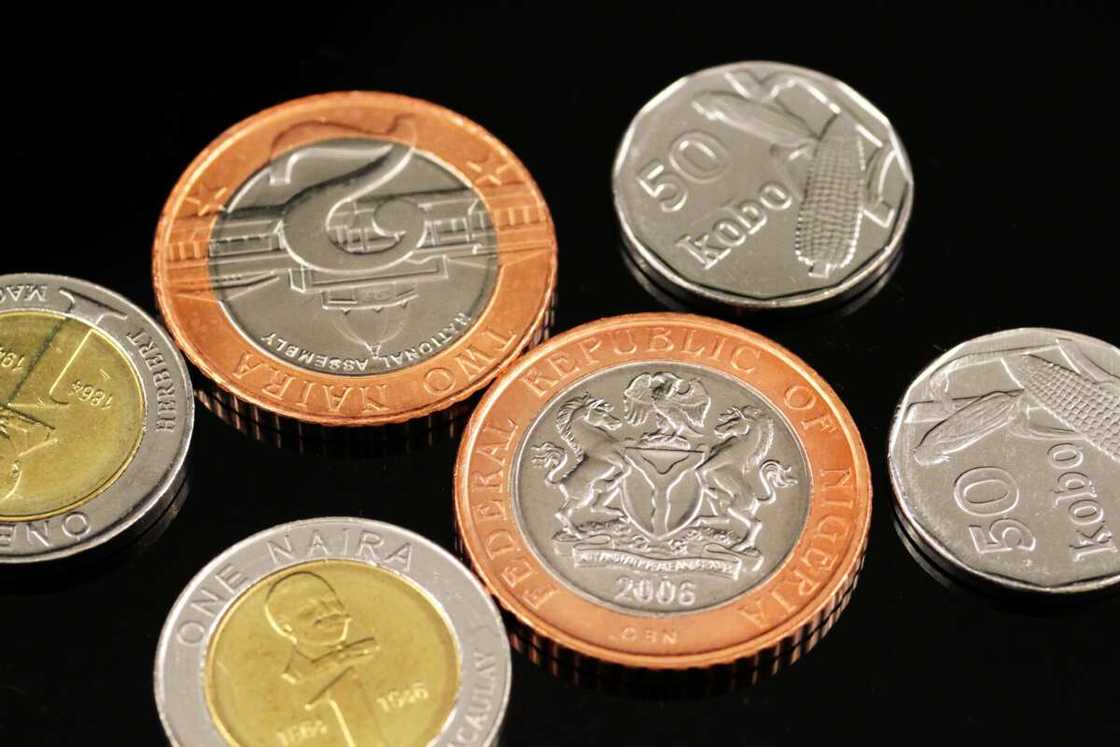
Source: Getty Images
On July 1, 1962, they changed the Nigerian currency to reflect the country's independence status. The banknotes were redesigned again in 1968 following their misuse, and President General Yakubu Gowon introduced the Naira (the decimal currency) on January 1, 1973.
The Naira involved currency notes and coins. Also, it was equivalent to 10/= (ten shillings), with a kobo being the minor uni. 100 kobos would make one Naira.

Read also
MTN laments destruction of facilities in Southeast days after acquiring 2.6GHz spectrum band
The history of the Naira coins
On January 1, 1973, Nigeria adopted the kobo coins in ½, 1, 5, 10, 25, and 50 kobo denominations. The ½ and 1 kobos were bronze, while the higher denominations were cupro-nickel. In 1991, denominations 1, 10, and 25 kobos were changed to copper-plated-steel coins, and the 50 kobo and ₦1 coins were transformed into nickel-plated-steel coins.
On February 28, 2007, the CBN withdrew ½ to 25 old Nigerian coins from circulation and issued new denominations of 50 kobo, ₦1, and ₦2. The ₦1 and ₦2 denominations are bimetallic.
The history of the Naira banknotes
On January 1, 1973, the CBN introduced notes in denominations ₦1, ₦5, ₦10, and ₦20. On February 11, 1977, the ₦20 (twenty Naira) was redesigned. It was the first banknote in Nigeria with a portrait of a Nigerian citizen — President General Murtala Ramat Muhammed.
On July 2, 1979, new currency notes of ₦1, ₦5, and ₦10 denominations were introduced. They had distinctive colors and portraits of three Nigerian national heroes to facilitate identification. Also, the back of the notes had engravings representing the country's cultural aspects.
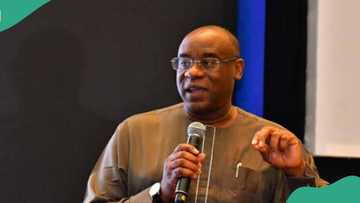
Read also
No plans to make $1 equal N1.25, CBN says, warns commercial banks about spending FX gains recklessly
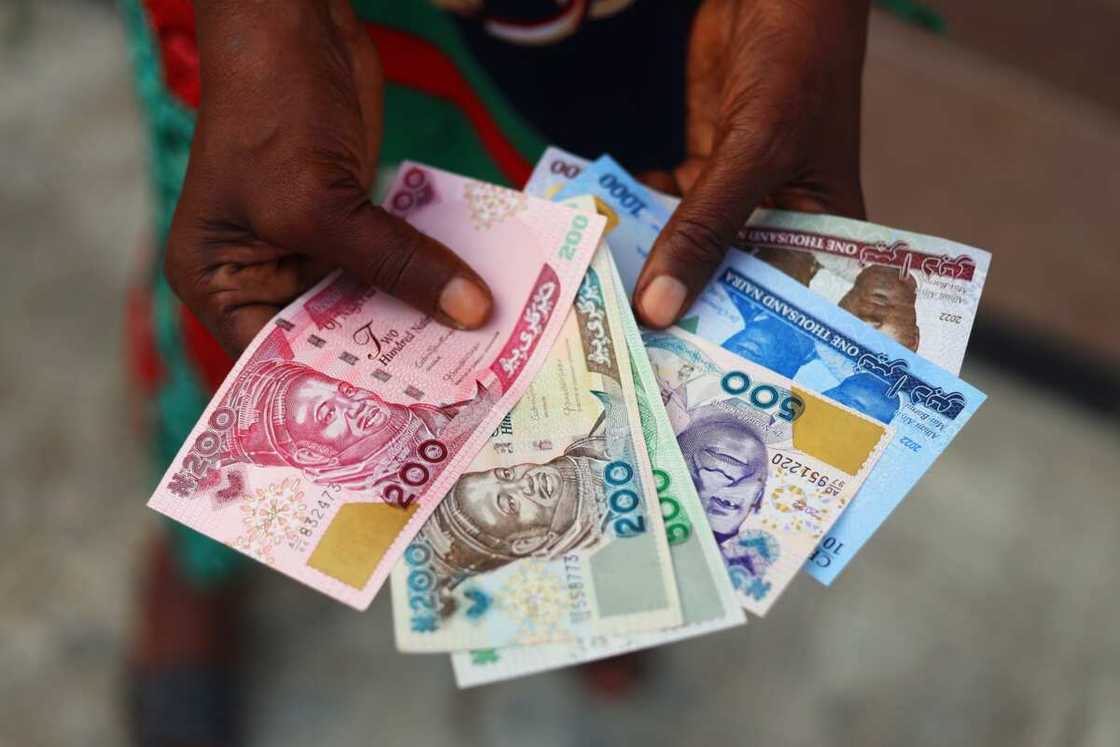
Source: Getty Images
When the economy expanded the ₦100, ₦200, ₦500, and ₦1,000 banknotes were introduced in 1999, 2000, 2001, and 2005 respectively. These notes facilitated an efficient payment system.
In 2012, the CBN contemplated introducing the ₦5000 banknotes and converting ₦5, ₦10, ₦20, and ₦50 notes into coins, but that has not happened to date.
When was the new 100 Naira note introduced?
On November 12, 2014, the CBN issued a ₦100 note to commemorate Nigeria's centenary.
In 2019, the Naira featured the signature of Priscilla Ekwere Eleje. She is the first woman to be the Director of Currency operations at the Central Bank of Nigeria (CBN).
Which Naira notes were changed as of late?
The CBN redesigned ₦200, ₦500, and ₦1,000 banknotes in 2022 under President Muhammadu Buhari's regime. ₦10, ₦20, ₦50, and ₦100 were not redesigned.
Which Naira banknotes are in circulation?
Right now, Nigeria uses the ₦5, ₦10, ₦20, ₦50, ₦100, ₦200, ₦500, and ₦1000 banknotes. The ₦5, ₦10, ₦20, and ₦50 notes are size 130 x 72 mm, while notes of higher denominations are 151 x 78 mm.
The ₦5 banknote
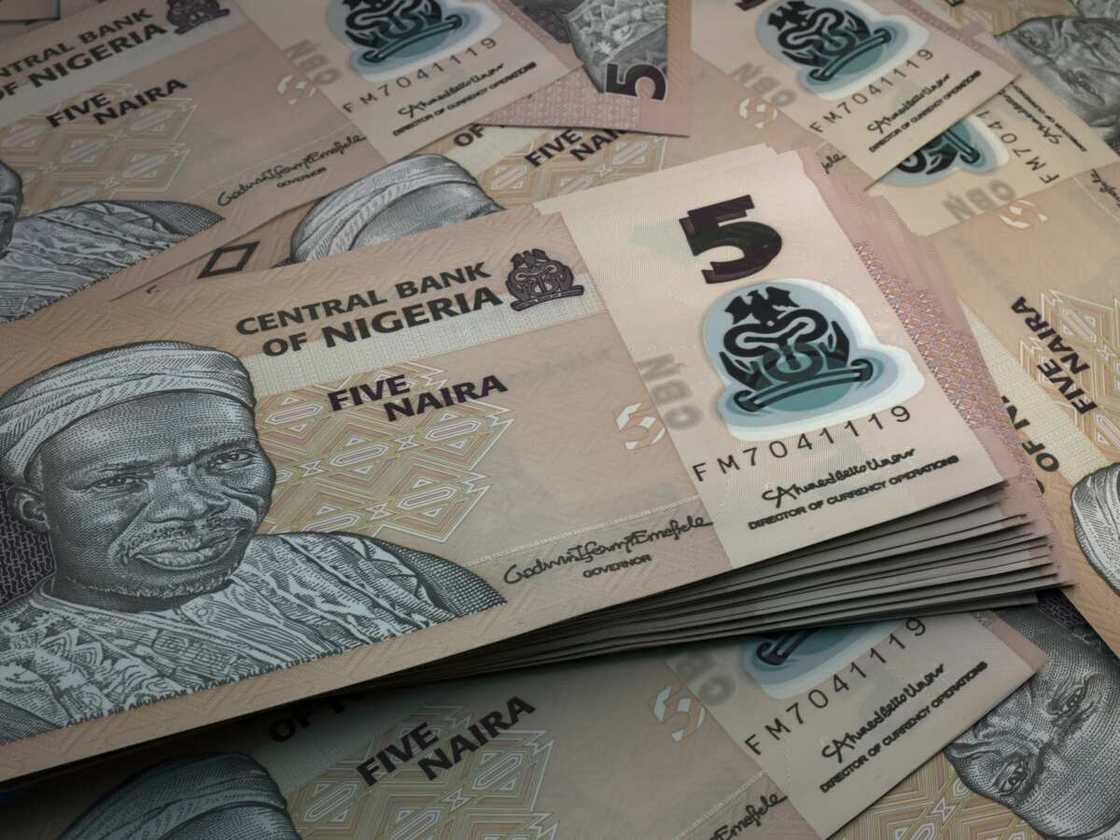
Source: Getty Images
The ₦5 banknote features Sir Abubakar Tafawa Balewa, the first federal Prime Minister of Nigeria. He was a conservative Anglophile and maintained close ties with the British. Abubakar also formed the Organization of African Unity, which created a solid relationship with French-speaking African countries.
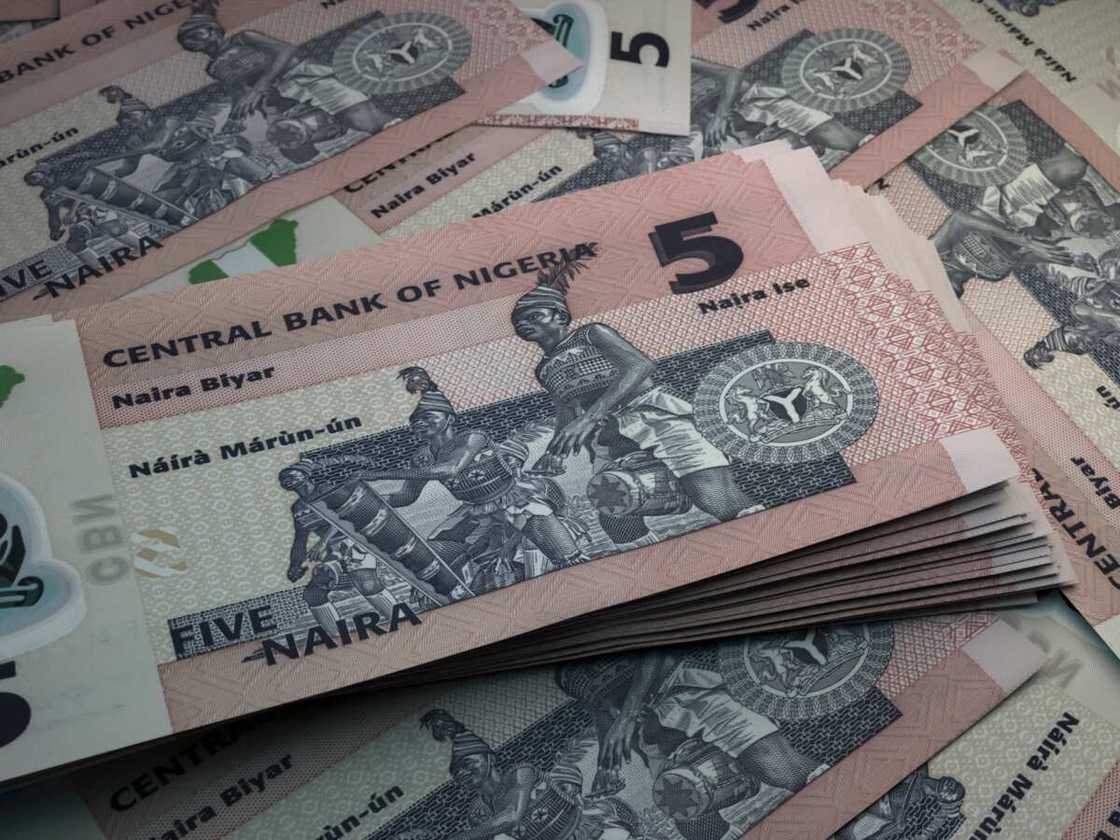
Source: Getty Images
The back side features Nigerian Nkpokiti drummers, the national coat of arms, and other details. Images of traditional drummers represent the unique culture of communities in Nigeria.
The ₦10 banknote
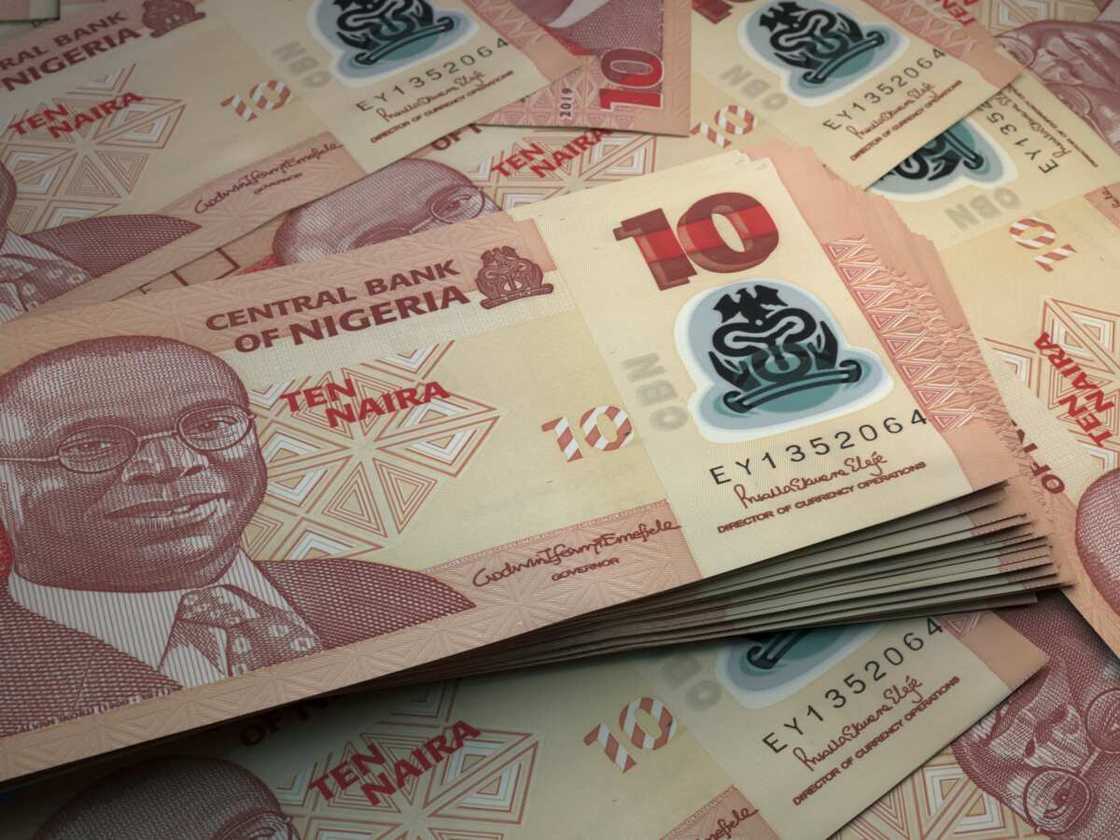
Source: Getty Images
The ₦10 banknote has a picture of Alvan Azinna Ikoku. He was a renowned Nigerian educationist, statesman, activist, and politician. Ikoku was a member of the Action Group's socialist faction and established Aggrey Memorial College, Arochukwu — Nigeria's first indigenous private secondary school.
The back of the note has portraits of Fulani milkmaids. They are often regarded as Nigeria's most beautiful women. These women are semi-nomads but do not move about as much as Fulani men. Most stay at the basic settlement of the Fulani people known as "wuru."
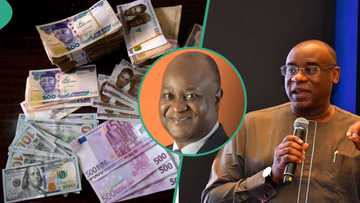
Read also
Ex-CBN Deputy Governor Lemo speaks on Tinubu's exchange rates unification as gap widens to N192
The ₦20 banknote
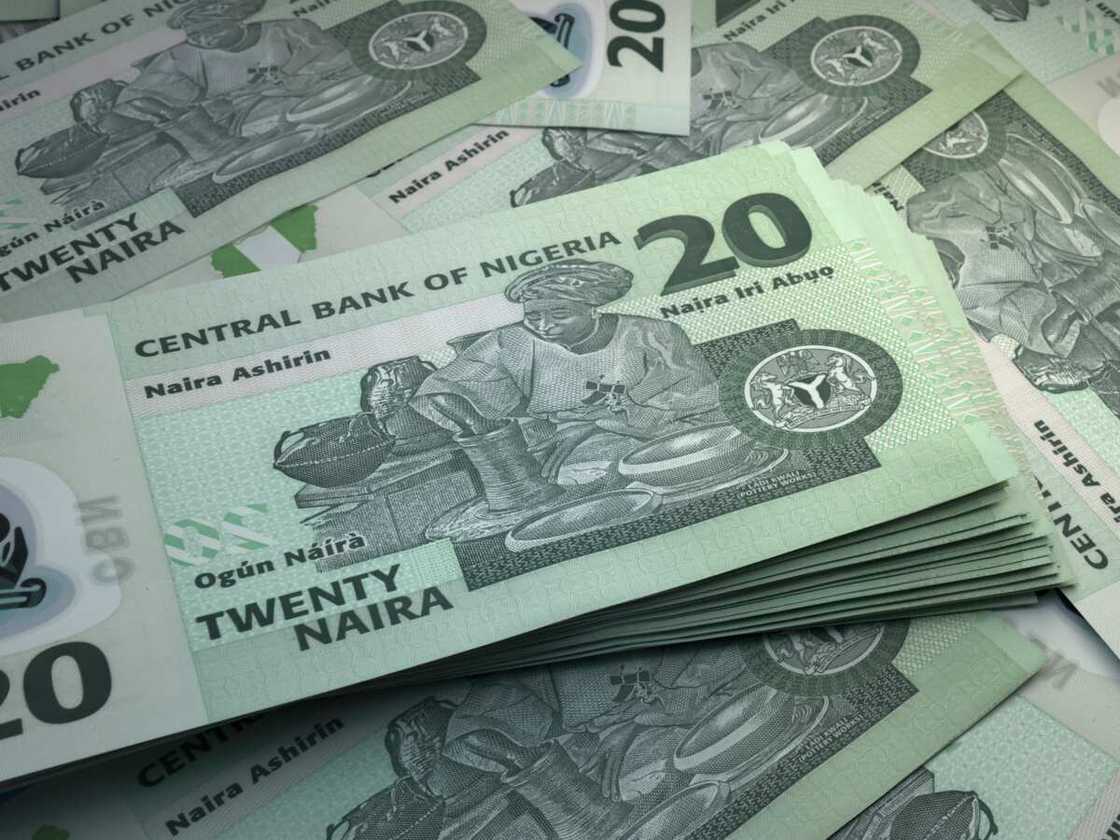
Source: Getty Images
Brigadier General Murtala Muhammad's portrait graces the front side of the ₦20 banknote. He was the Head of the Federal Military Government of Nigeria. Muhammad's image symbolizes security in Nigeria.
The backside of the ₦20 banknote features Ladi Dosei Kwali. She was a Nigerian potter, ceramicist, and educator. She was born in Kwali village in Gwari region, Northern Nigeria, where pottery was an indigenous occupation among women.
The ₦50 banknote
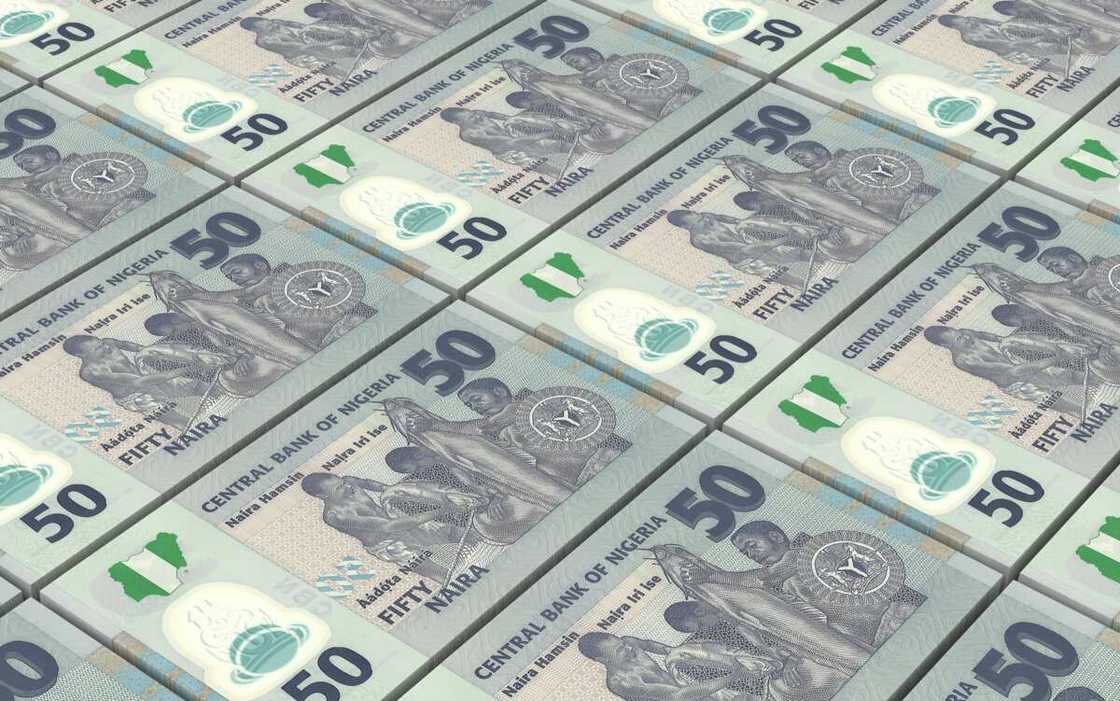
Source: Getty Images
The four ordinary people on Nigeria's ₦50 banknote represent the various ethnic groups and cultures in Nigeria. The country has 371 ethnic groups who speak over 500 languages.
The back side of this note has an image of local fishermen with fish. The picture symbolizes Nigeria has food and natural resources in abundance. Also, fish is a big part of the food most households in the country eat. They eat crayfish, sardines, mackerel, tilapia, carp, catfish, etc.
The ₦100 banknotes
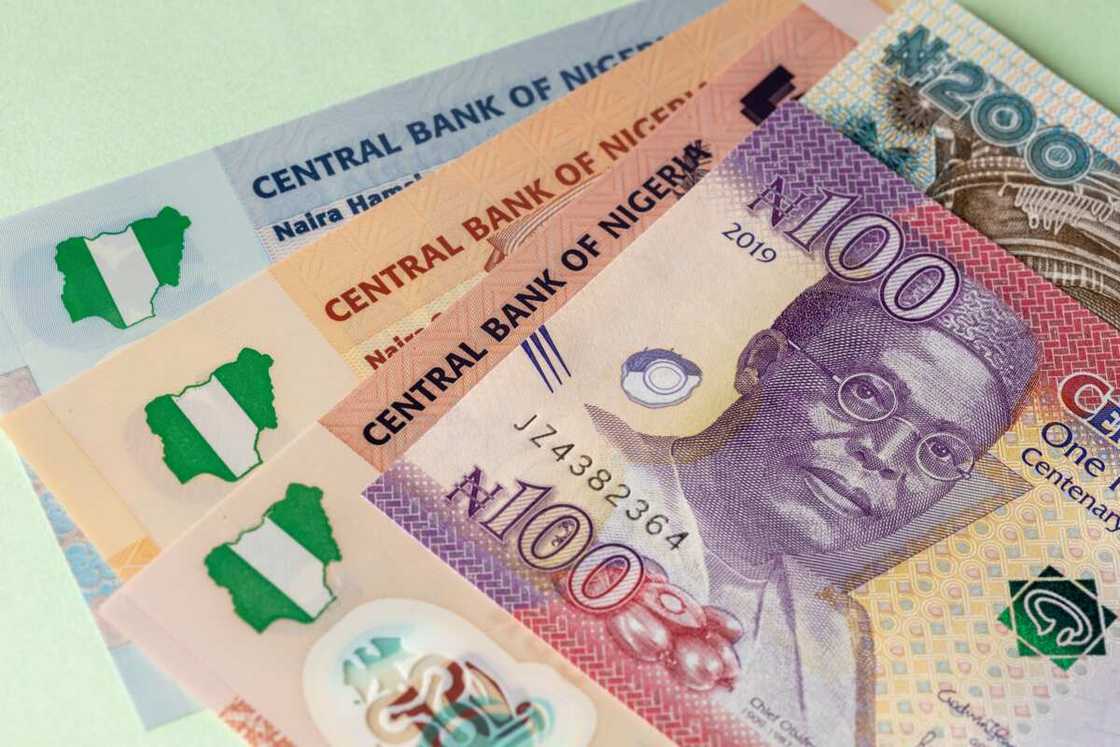
Source: Getty Images
The new ₦100 banknote was issued in 2014 to commemorate the centenary of Nigeria. The front side has an image of Chief Obafemi Jeremiah Oyeniyi Awolowo. He was an influential advocate of independence, nationalism, and federalism.
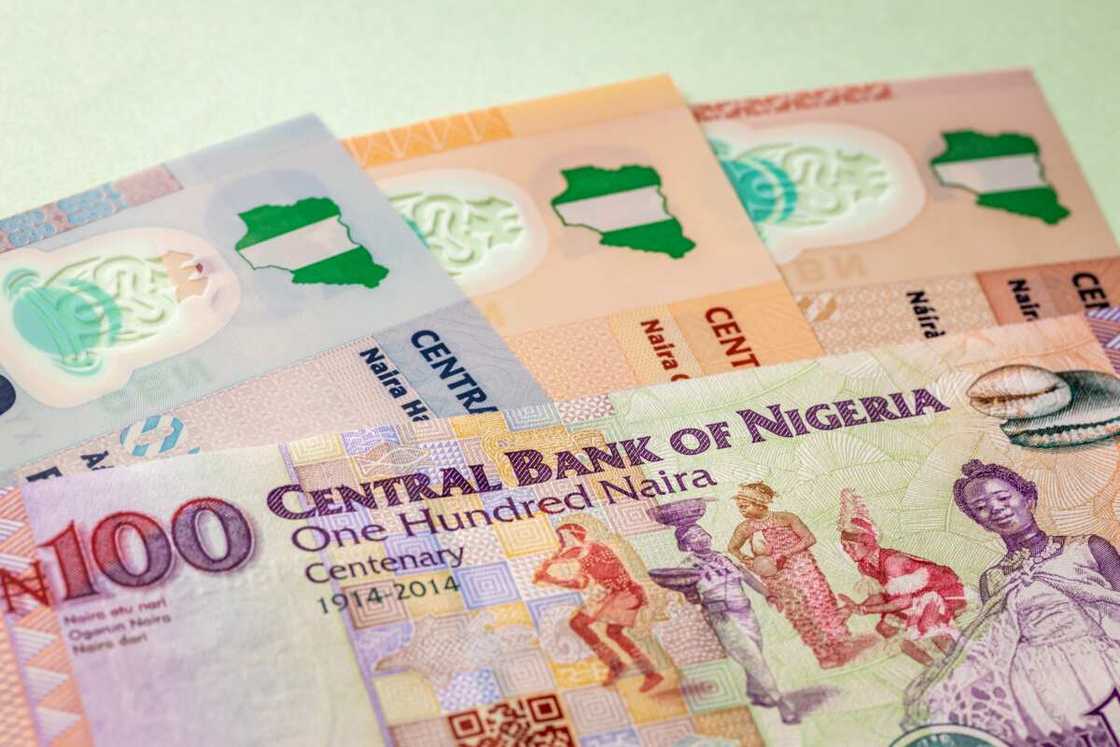
Source: Getty Images
The images of traditional women at the back of the note represent the diverse culture of the people of Nigeria. The note also has a QR code you can scan to visit the centenary's website.
The old ₦100 banknote was issued in 1999 and is still circulating. The front side still features Obafemi Awolowo. The Nigerian nationalist and statesman played a key role in Nigeria's independence movement.
The back side of this note has an image of the Zuma Rock and other details. Zuma rock is a large natural monolith with a human-like facial imprint. It is found in the west of Nigeria's capital, Abuja.
Which kobo Nigerian coins are in circulation?
The 50 kobo, ₦1, ₦2 Nigerian currency coins are in circulation, but they all have an extremely low value. Let's take a closer look at their features below:
The 50 kobo
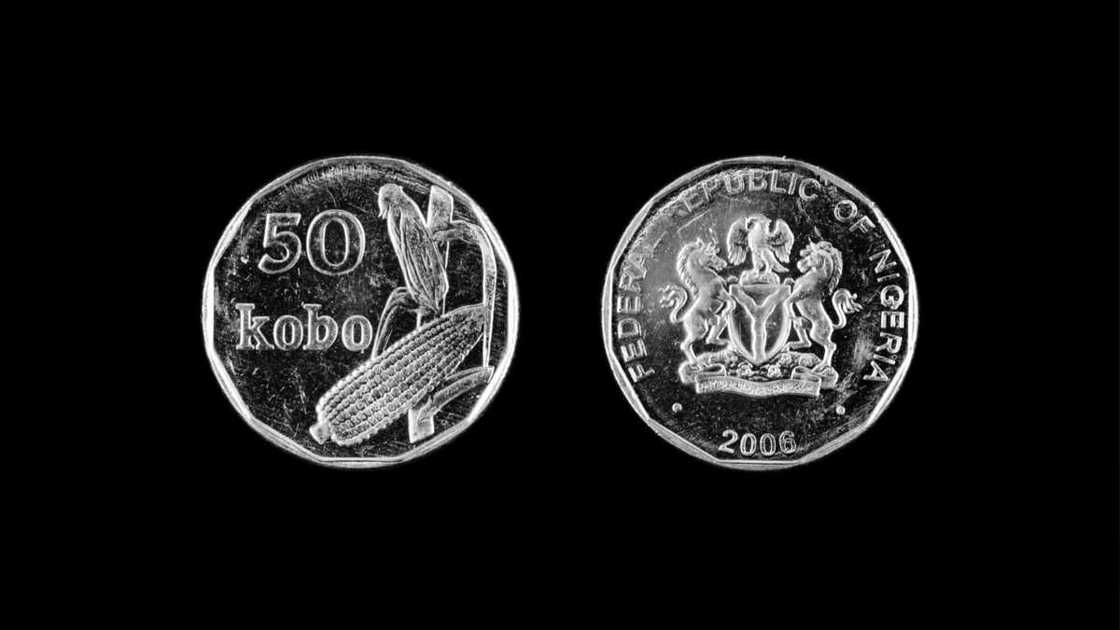
Source: Getty Images
The smallest coin (by denomination) is the 50 kobo coin. It is 24.5 mm in diameter and shaped as a 12-sided polygon. The material used in making it is nickel. On one side, you can see the Nigerian Coat of Arms, the words' Federal Republic of Nigeria' along the inside, and the year it was minted written in. The reverse side has maize cobs and the '50 kobo' value.
The ₦1 kobo
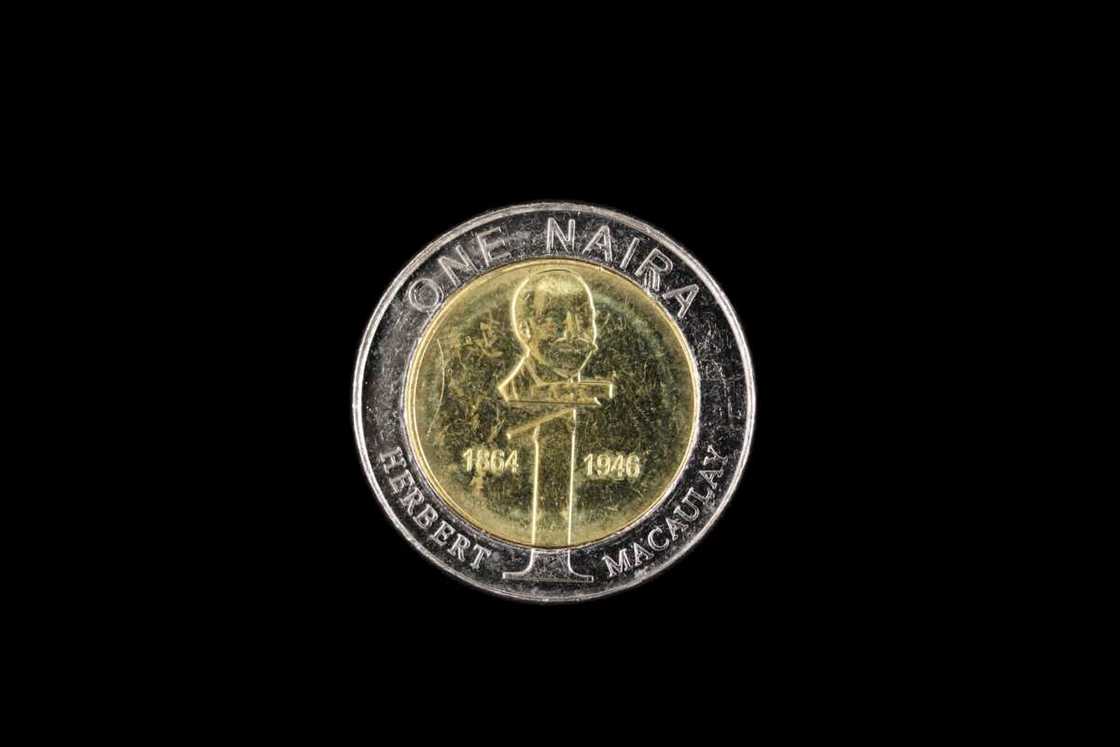
Source: Getty Images
The ₦1 kobo is 27.5 mm in diameter, round, and made out of steel plated with brass. The obverse contains the Nigerian Coat of Arms and the year of issue in the inner circle (brass-colored) with the writings' Federal Republic of Nigeria' and 'CBN' in the outer steel ring. The reverse has a bust of Nigerian political leader Herbert Macaulay, the years he lived (1864-1946), and the coin's value.
The ₦2 kobo
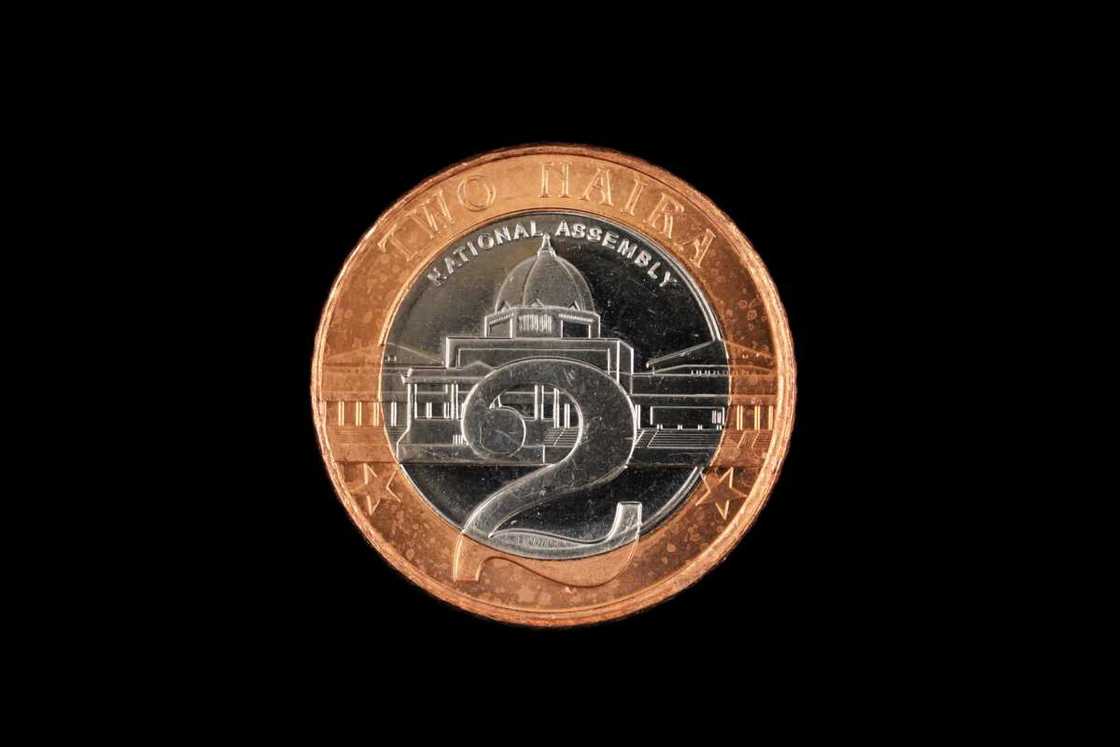
Source: Getty Images
The ₦2 kobo coin is a 24.5 mm diameter, round, and steel-plated with copper. The obverse looks the same as the previous one, except the outer ring is copper-colored. The reverse contains the image of Abuja's National Assembly building with the large number 2 on top of it and the words' two naira' around it.
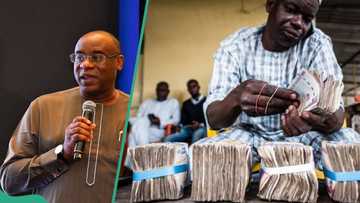
Read also
“Too cheap": CBN names BDC operator selling dollars below N700/$, begins manhunt for others
Old Nigerian currency notes that are not in circulation
The old ₦1,000, ₦500, and ₦200 banknotes have similar historical and visual features as the new ones. CBK only changed the colors of these banknotes. Below are images of the old versions of the ₦1,000, ₦500, and ₦200 notes:
The old ₦200 banknote
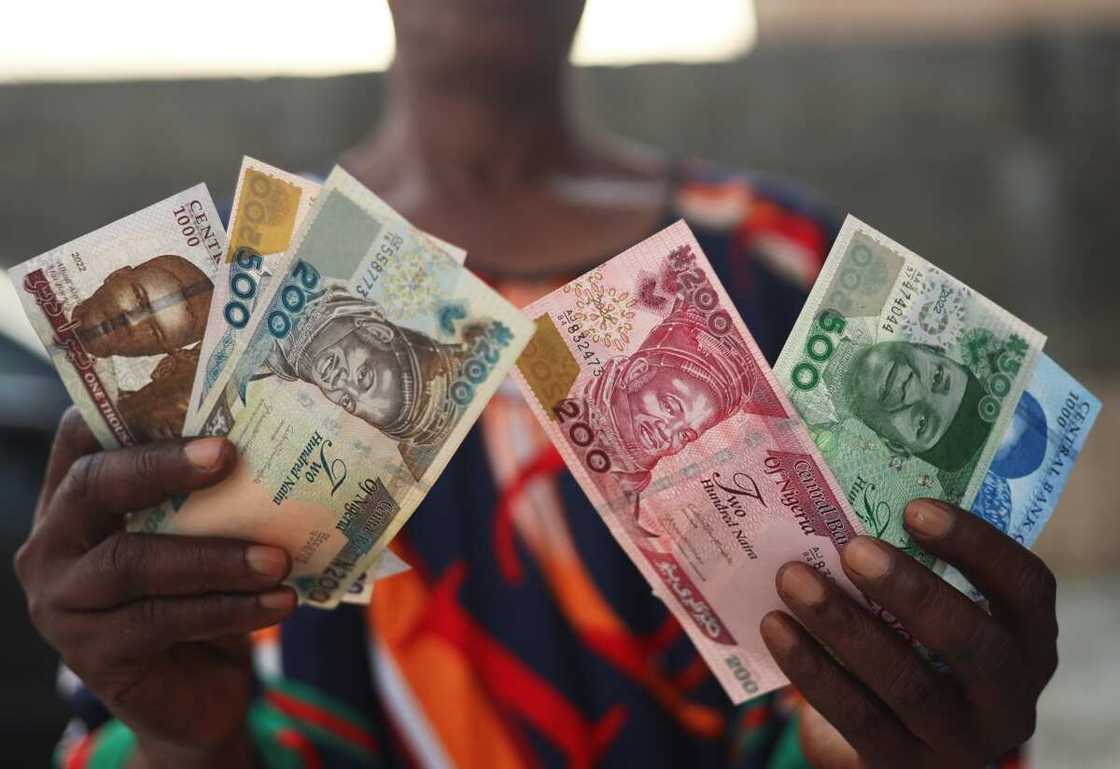
Source: Getty Images
The ₦200 Nigerian banknotes feature a portrait of Sir Ahmadu Ibrahim Bello. He initiated plans to modernize traditional Koranic education in Northern Nigeria and set up a commission that introduced secular subjects and different classes for pupils in Nigerian schools.
The old ₦500 banknote
A portrait of the first President of Nigeria, Nnamdi Azikiwe, is on the front side of the new and old ₦500 banknotes. He was the most central figure in Nigeria's efforts to obtain independence and a life-long advocate of African independence.
The back side of the new and old ₦500 banknotes has an oil rig installed in the middle of the ocean. The images represent the abundance of oil in the country. Nigeria is Africa's top oil producer, with an average daily oil output (NGOIL=ECI) of 1.22 million barrels (mbpd).
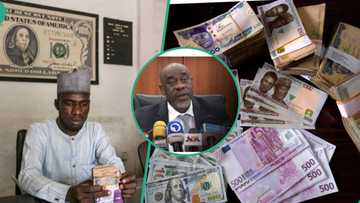
Read also
Naira value rises against dollar as CBN partners access, zenith, UBA other banks to clear debts in 2 weeks
The old ₦1,000 banknote
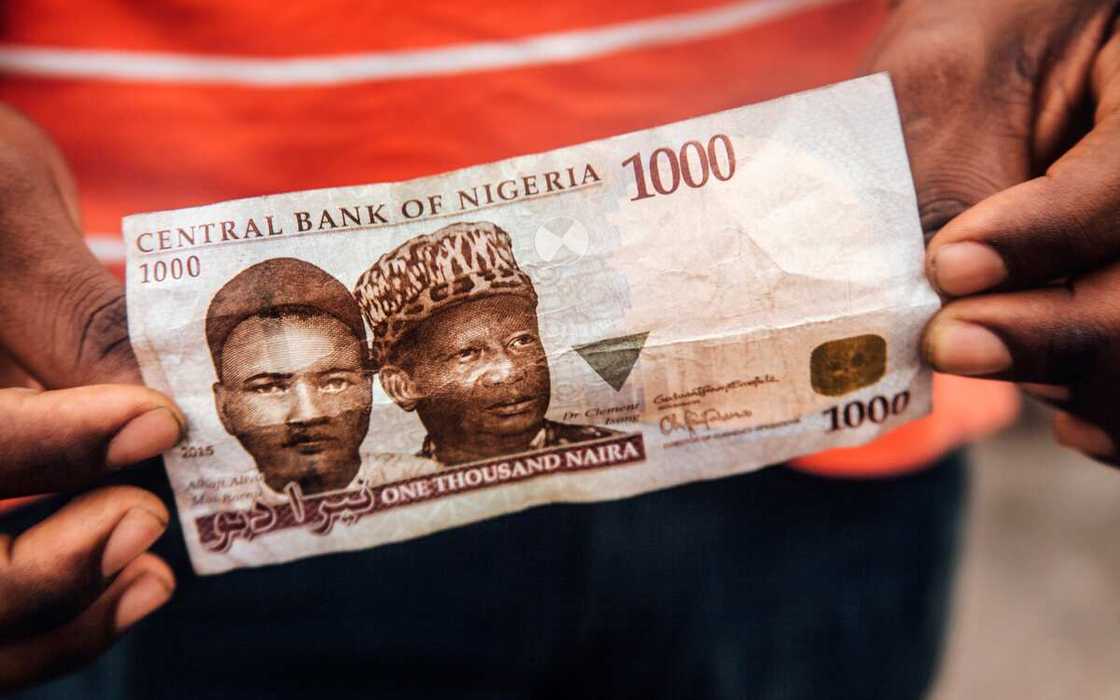
Source: Getty Images
The old and new ₦1,000 banknote feature portraits of CBN's first and second indigenous governors, Alhaji Aliyu Mai-Bornu and Clement Nyong Isong.
The back side of the old and new ₦1,000 banknotes is an image of the official CBN headquarters in Abuja. The building is 308 feet (94 m) tall. The structure comprises four distinct towers of 13-storey buildings; each arranged as wings to straddle a central atrium.
What are the new currency notes in Nigeria in 2023?
The new banknotes in Nigeria are ₦1,000, ₦500, and ₦200. The old versions of these notes ceased being legal tender in Nigeria on Friday, February 10, 2023.
What is the Dollar to Naira exchange rate?
As of writing, the US Dollar to Naira exchange rate is around 1 USD = 784.57 NGN.
The visual appearance of the Nigerian currency notes and coins changes occasionally. The government redesigns currency, withdraws some from circulation, and issues new ones into the economy to increase or reduce the available money supply, combat counterfeiting and improve the currency's security, reduce corruption and money laundering, and boost the country's economic growth. Sometimes, these strategies work, and at other times, they cause more economic problems in Nigeria.
Legit.ng explained the objectives of the monetary policy in Nigeria. A monetary policy is a set of actions the government and CBN undertake to control the overall money supply and achieve economic growth.
A monetary policy affects all economic sectors of the country, including employment and prices of goods/services. Some of the monetary policy tools Nigeria uses are Open Market Operations, Bank Rate policy (discount rate), cash reserve ratio (CRR), and Statutory Liquidity Ratio (SLR).
Source: Legit.ng

Peris Walubengo (Lifestyle writer) Peris Walubengo has vast experience in search engine optimization through digital content generation, research, editing, and proofreading. She joined Legit.ng in April 2022 and completed the AFP course on Digital Investigation Techniques. You can email her at perisrodah254@gmail.com.

Adrianna Simwa (Lifestyle writer) Adrianna Simwa is a content writer at Legit.ng where she has worked since mid-2022. She has written for many periodicals on a variety of subjects, including news, celebrities, and lifestyle, for more than three years. She has worked for The Hoth, The Standard Group and Triple P Media. Adrianna graduated from Nairobi University with a Bachelor of Fine Arts (BFA) in 2020. In 2023, Simwa finished the AFP course on Digital Investigation Techniques. You can reach her through her email: adriannasimwa@gmail.com


